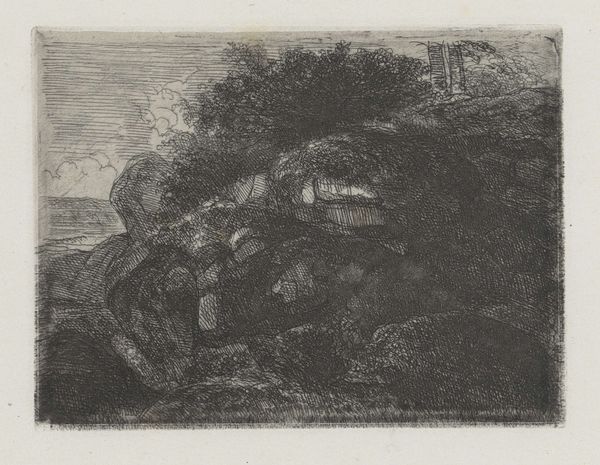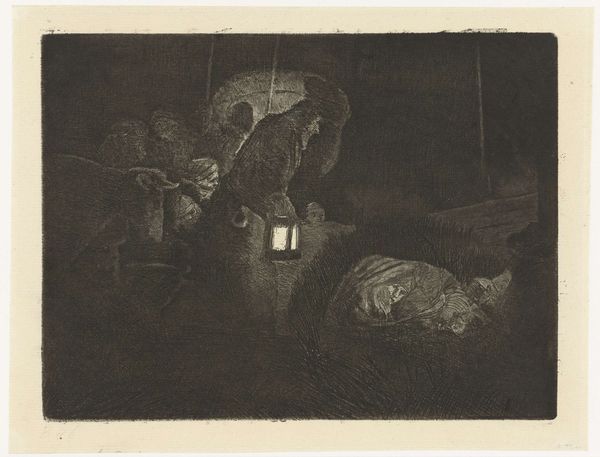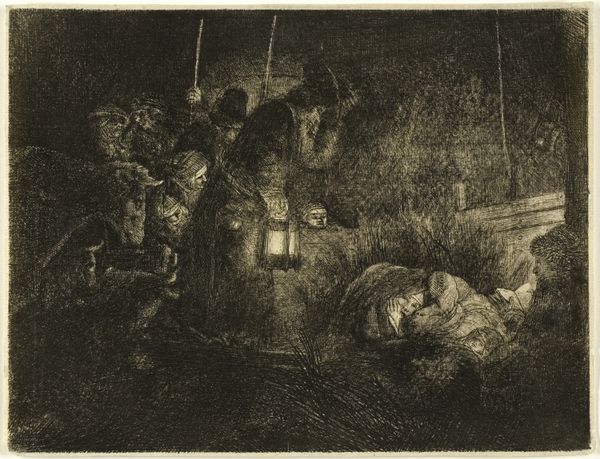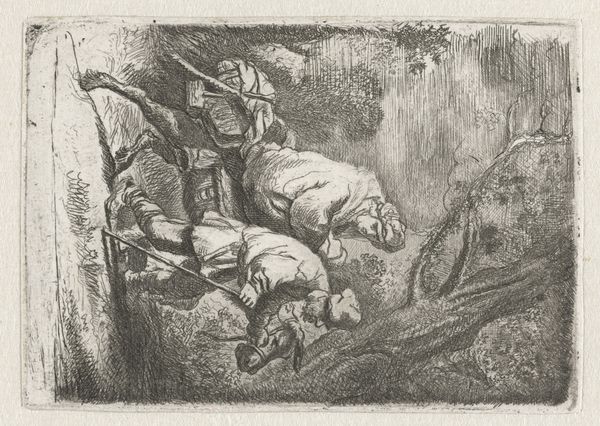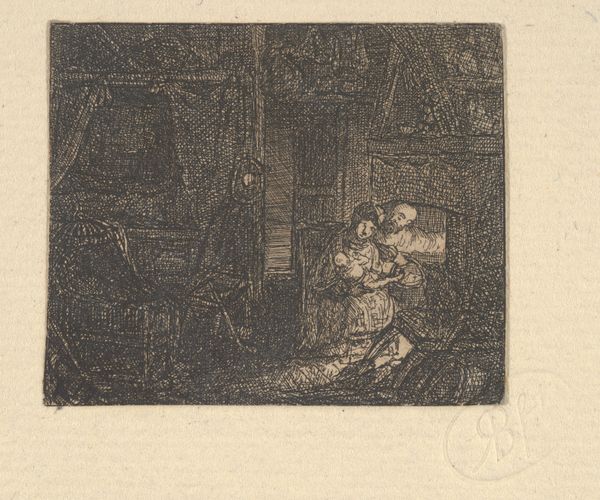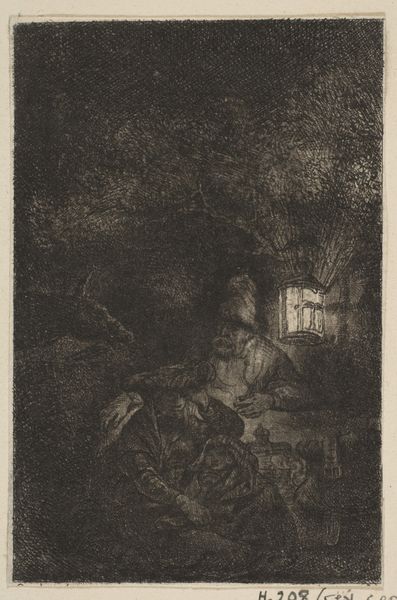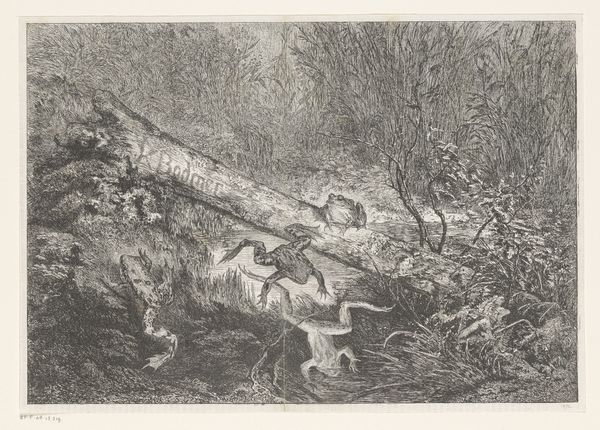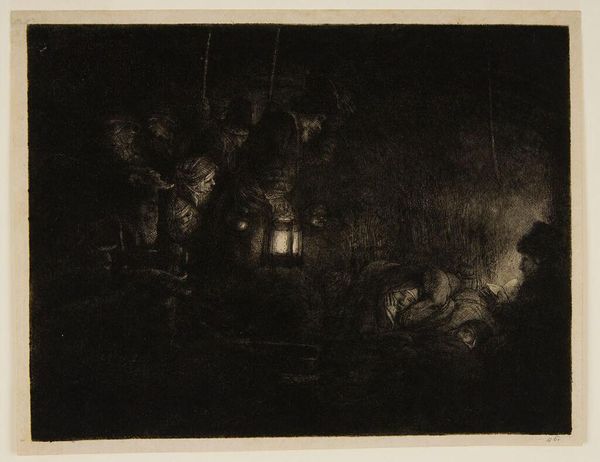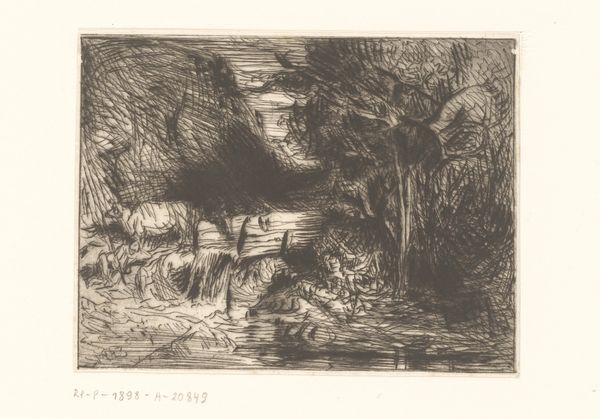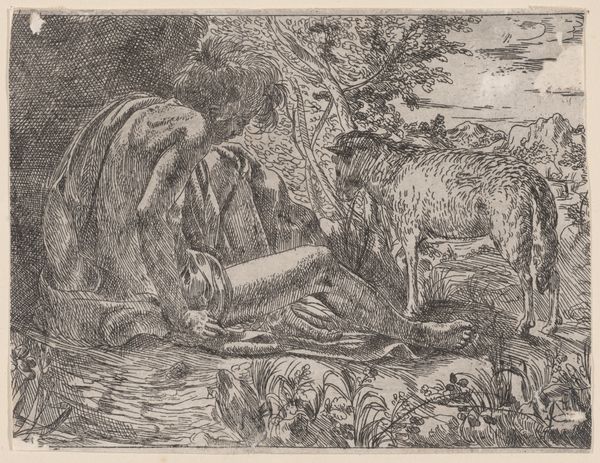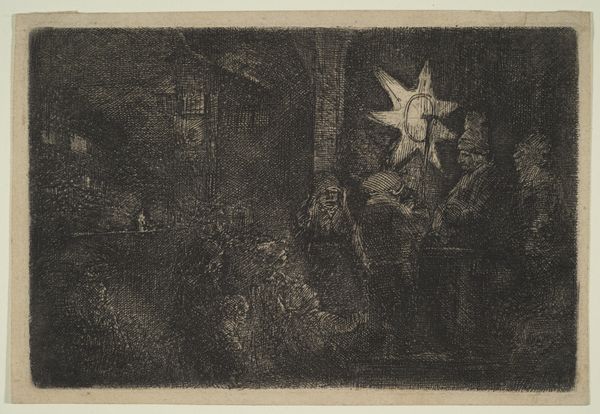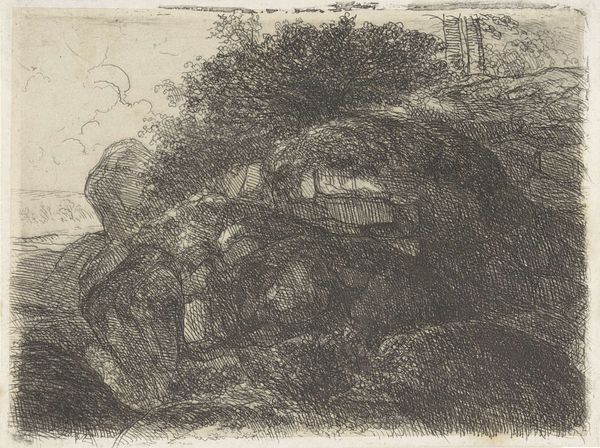
print, etching
#
baroque
# print
#
etching
#
landscape
#
figuration
#
history-painting
Dimensions: height 148 mm, width 198 mm
Copyright: Rijks Museum: Open Domain
Curator: This print, "Adoration of the Shepherds: Night Piece", is attributed to Rembrandt van Rijn and believed to have been created sometime between 1650 and 1808. The etching medium lends itself beautifully to the chiaroscuro effect he achieves. Editor: Immediately striking is its incredibly intimate mood. It feels more like stumbling upon a private moment than witnessing a grand spectacle, the typical portrayal of this scene. It feels so human, and the soft light emanates a strange sort of tenderness, though so much is shrouded in shadow. Curator: Rembrandt's process in this work speaks volumes about the socio-political environment in the Netherlands at the time. Printmaking, unlike painting, allowed for wider distribution, engaging a broader audience with religious narratives, circumventing, perhaps, the elite patronage system. It questions high and low art. Editor: And yet, its presentation here in the Rijksmuseum inherently elevates it. Consider how the museum context itself, this carefully constructed space of national identity and art historical canonization, shapes our encounter with an object originally conceived for mass distribution. Doesn’t that tension add another layer to how we should perceive it? Curator: Absolutely, especially as the choice of etching allows Rembrandt a unique manipulation of light through the build-up of tiny lines, exploiting the materiality of the metal plate itself. His labor, etched literally into the medium, is vital to the composition, playing on surface and depth to focus the adoration narrative. Editor: This makes you think about the role of public institutions in shaping the narrative around art and belief? Do museums perpetuate or challenge traditional hierarchies of art and faith, particularly when displaying pieces meant for dissemination, such as this one? Curator: Seeing it here, and knowing its history, is really enlightening, especially appreciating its journey from potential common reproduction to prized collection object. Editor: Indeed. This work reveals not just artistic skill, but also invites contemplation on art’s relationship to society, value, and the institutions that mediate our encounter with it.
Comments
No comments
Be the first to comment and join the conversation on the ultimate creative platform.
